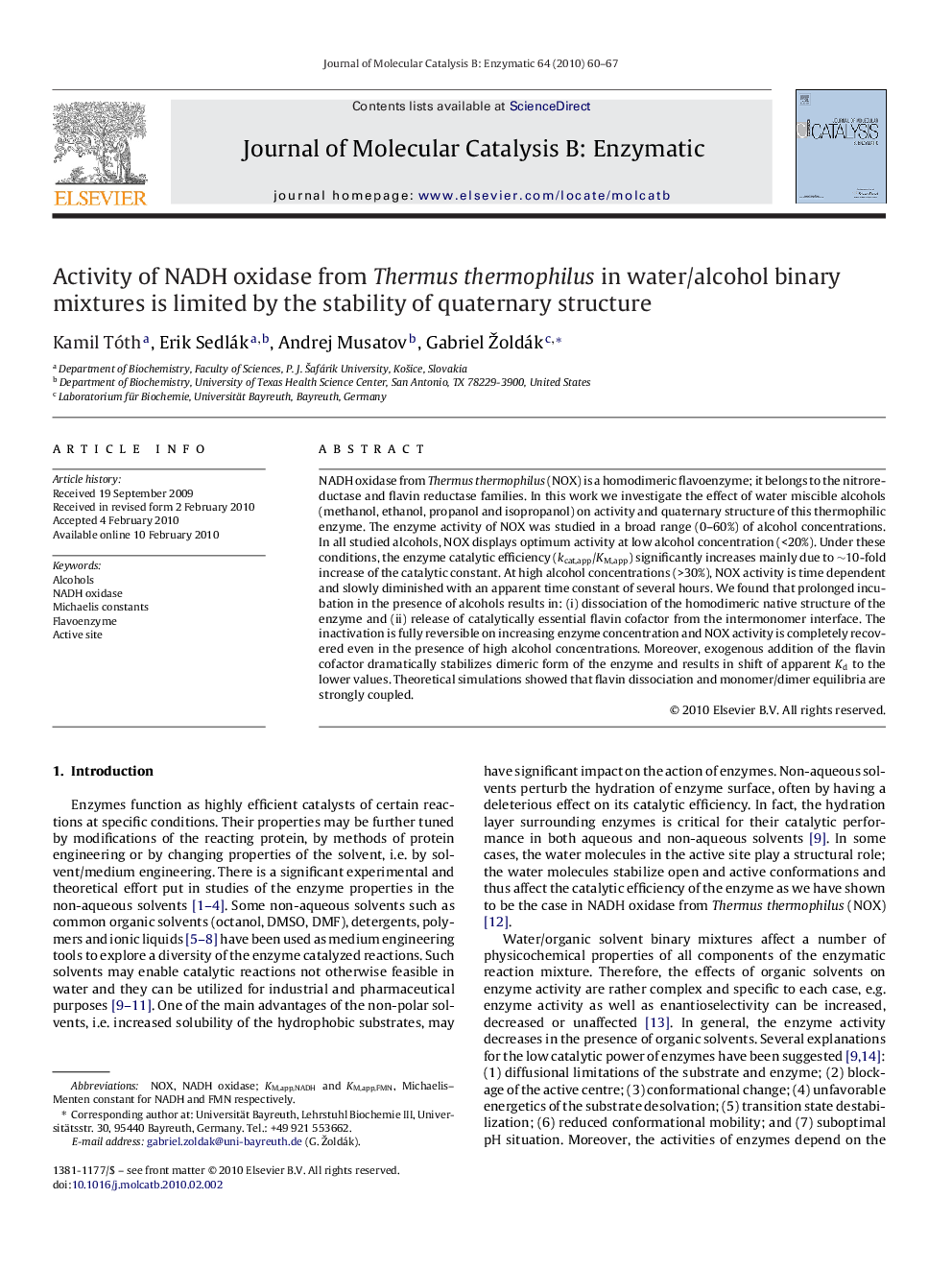| Article ID | Journal | Published Year | Pages | File Type |
|---|---|---|---|---|
| 70385 | Journal of Molecular Catalysis B: Enzymatic | 2010 | 8 Pages |
NADH oxidase from Thermus thermophilus (NOX) is a homodimeric flavoenzyme; it belongs to the nitroreductase and flavin reductase families. In this work we investigate the effect of water miscible alcohols (methanol, ethanol, propanol and isopropanol) on activity and quaternary structure of this thermophilic enzyme. The enzyme activity of NOX was studied in a broad range (0–60%) of alcohol concentrations. In all studied alcohols, NOX displays optimum activity at low alcohol concentration (<20%). Under these conditions, the enzyme catalytic efficiency (kcat,app/KM,app) significantly increases mainly due to ∼10-fold increase of the catalytic constant. At high alcohol concentrations (>30%), NOX activity is time dependent and slowly diminished with an apparent time constant of several hours. We found that prolonged incubation in the presence of alcohols results in: (i) dissociation of the homodimeric native structure of the enzyme and (ii) release of catalytically essential flavin cofactor from the intermonomer interface. The inactivation is fully reversible on increasing enzyme concentration and NOX activity is completely recovered even in the presence of high alcohol concentrations. Moreover, exogenous addition of the flavin cofactor dramatically stabilizes dimeric form of the enzyme and results in shift of apparent Kd to the lower values. Theoretical simulations showed that flavin dissociation and monomer/dimer equilibria are strongly coupled.
